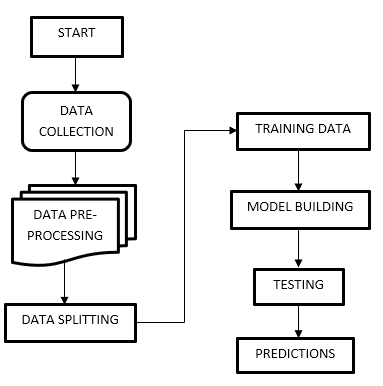Predicting at-Risk Students at Different Percentages of Course Length for Early Intervention Using Machine Learning Models
Objective
The main objective of this application is to investigate a specific problem of whether it is valuable or not to use machine learning techniques to predict the Risk students.
Abstract
Online learning platforms such as Massive Open Online Course (MOOC), Virtual Learning Environments (VLEs), and Learning Management Systems (LMS) facilitate thousands or even millions of students to learn according to their interests without spatial and temporal constraints. Besides many advantages, online learning platforms face several challenges such as students’ lack of interest, high dropouts, low engagement, students’ self-regulated behavior, and compelling students to take responsibility for settings their own goals. In this study, we propose a predictive model that analyzes the problems faced by at-risk students, subsequently, facilitating instructors for timely intervention to persuade students to increase their study engagements and improve their study performance. The predictive model is trained and tested using various machine learning (ML) algorithms to characterize the learning behavior of students according to their study variables. The performance of various ML algorithms is compared by using accuracy, precision, support, and f-score. The ML algorithm that gives the best result in terms of accuracy, precision, recall, support, and f-score metric is ultimately selected for creating the predictive model at different percentages of course length. The predictive model can help instructors in identifying at-risk students early in the course for timely intervention thus avoiding student dropouts.
KEYWORDS: supervised Learning, Random forest algorithm, and Machine LearningNOTE: Without the concern of our team, please don't submit to the college. This Abstract varies based on student requirements.
Block Diagram

Specifications
HARDWARE SPECIFICATIONS:
- Processor- I3/Intel Processor
- RAM- 4GB (min)
- Hard Disk- 128 GB
- Key Board-Standard Window
- Keyboard. Mouse-Two or Three Button Mouse.
- Monitor-Any.
SOFTWARE SPECIFICATIONS:
- Operating System: Windows 7+
- Technology: Python 3.6+
- IDE: PyCharm IDE
- Libraries Used: Pandas, NumPy, Scikit-Learn, Matplotlib.
Learning Outcomes
- About Python.
- About Jupyter Notebook.
- About Pandas.
- About Numpy.
- About HTML.
- About CSS.
- About JavaScript.
- About Database.
- About Machine Learning.
- About Artificial Intelligent.
- About how to use the libraries.
- Cloud Overview.
- Terminology of cloud.
- Project Development Skills:
- Problem analyzing skills.
- Problem solving skills.
- Creativity and imaginary skills.
- Programming skills.
- Deployment.
- Testing skills.
- Debugging skills.
- Project presentation skills.
- Thesis writing skills.





 Paper Publishing
Paper Publishing
